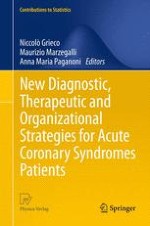2013 | OriginalPaper | Buchkapitel
The Role of Cardiac Magnetic Resonance in Selecting Patients with Left Ventricular Dysfunction Undergoing Surgical Ventricular Reconstruction
verfasst von : Serenella Castelvecchio, Lorenzo Menicanti
Erschienen in: New Diagnostic, Therapeutic and Organizational Strategies for Acute Coronary Syndromes Patients
Verlag: Springer Milan
Aktivieren Sie unsere intelligente Suche, um passende Fachinhalte oder Patente zu finden.
Wählen Sie Textabschnitte aus um mit Künstlicher Intelligenz passenden Patente zu finden. powered by
Markieren Sie Textabschnitte, um KI-gestützt weitere passende Inhalte zu finden. powered by
